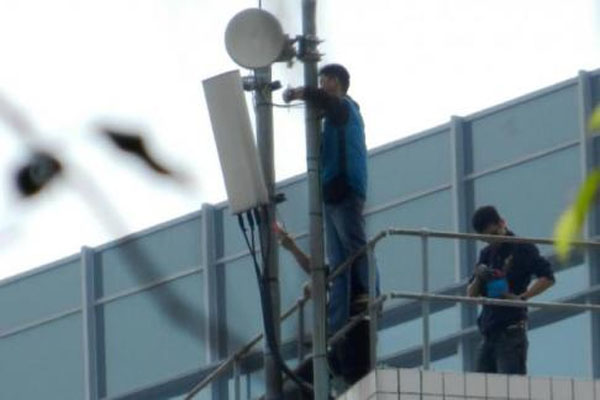Campus dwellers assured radiation exposure ‘extremely low’, but not all are convinced
The University of Science and Technology has taken steps to ease fears among academics and students about a potential cancer risk from a proliferation of mobile phone antennae on campus building rooftops.
A memo was sent out to all staff and students after the Sunday Morning Post reported last weekend that mobile phone companies had paid the university to erect an estimated 87 antennae on the rooftops of residential and student blocks.

Teachers living on campus said workmen had been seen in the days after the story appeared, removing some antennae from blocks where there was a particularly high concentration of masts.
Some in the academic community who live with young children on campus fear the electromagnetic radiation (EMR) the antennae generate could pose a cancer risk.
In its January 30 memo, the university’s health, safety and environment office acknowledged the “concern” but insisted the radiation risk on campus was low. The memo, much of it written in dense technical language, cites research by a World Health Organisation working group concluded in 2011 that exposure to EMR fields was “possibly carcinogenic to humans”.
However, the memo said that residents’ exposure was “extremely low as the rooftop antenna are generally, highly directional and pointing outward from the building”.
Although several antenna might be grouped on one rooftop, only one in three would be transmitting antennae emitting EMR fields, it said, and concrete walls and ceilings afforded additional protection.
The assurances didn’t impress some staff living on campus. One person, speaking on condition of anonymity, asked: “If these antennae are perfectly safe, why are they taking some of them down all of a sudden? In the past few days, we have seen workmen dismantling some masts at the densest spots like the undergraduate hall and the University Centre Bistro.”
The staff member said the WHO study cited in the memo referred to regular mobile phone use, “not 24/7 exposure to mobile phone antenna”.
“We are exposed to the EMR day and night in our homes, offices, classrooms and student halls,” the person said.
Another member of staff living on campus challenged the claim that only one in three antennae was in use at one time. “How does it make sense to keep erecting more masts if they will not be used?” the person asked.
The academics called for the university to reveal how much money mobile phone companies were paying for the service.
A university spokeswoman declined to give a figure but said all the money paid went to a university scholarship fund.
The university added: “Routine maintenance and cabling improvement works are carried out on an ongoing basis. If any antennae are found to be defective during this process, they may be removed and replaced.”
Source: scmp

